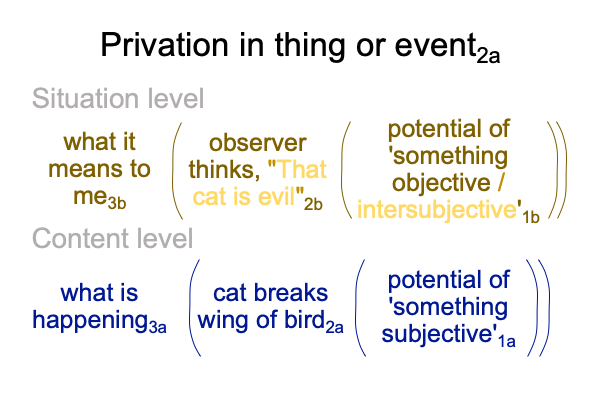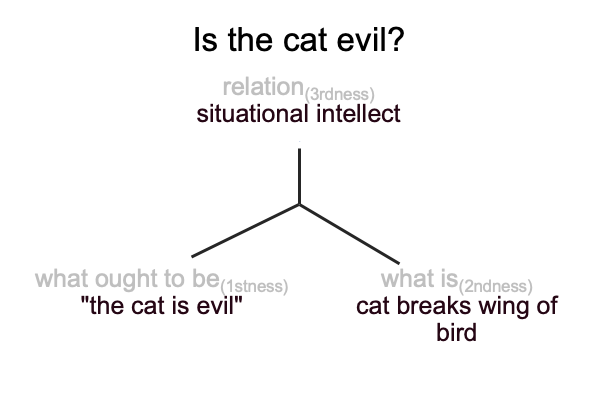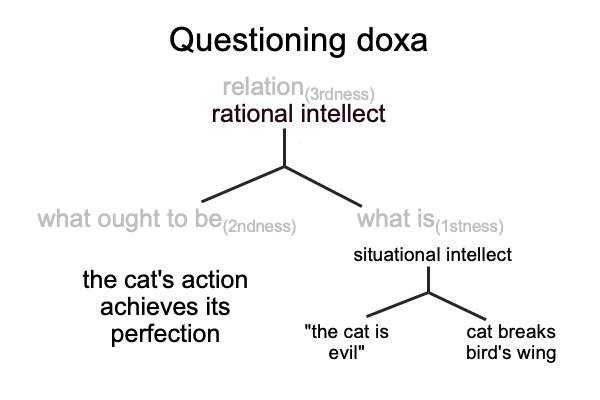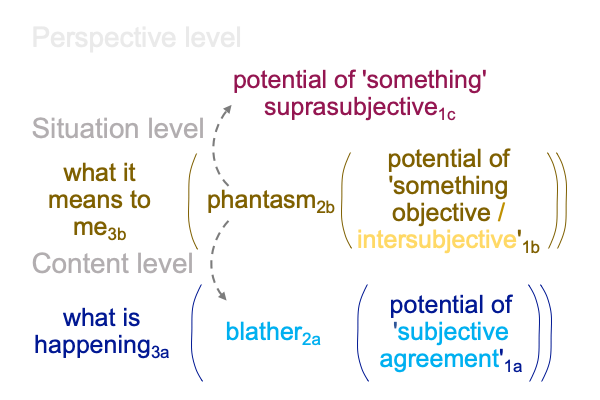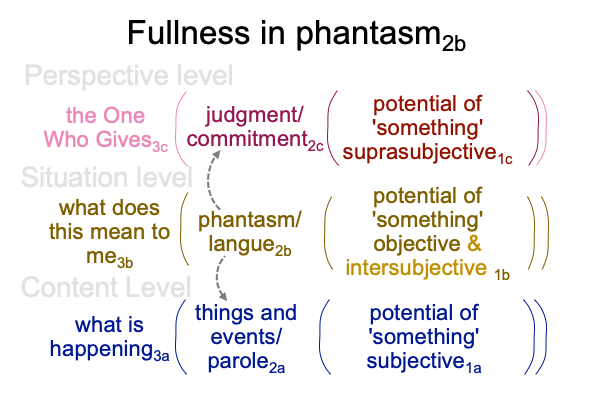Looking at Kirk Kanzelberger’s Essay (2020) “Reality and the Meaning of Evil” (Part 3 of 18)
0010 Here is a diagram of the previous blog.
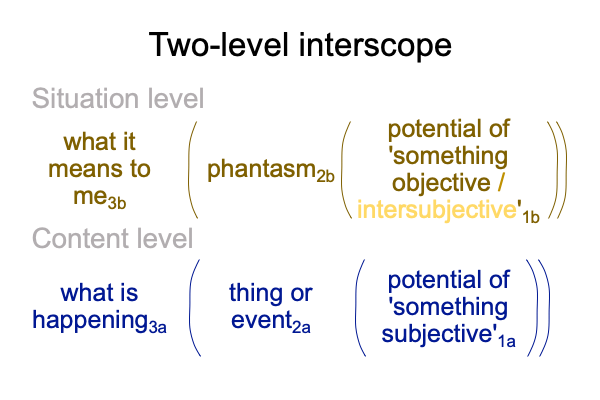
0011 In section two, Kanzelberger follows Aquinas (who follows Aristotle) by starting with the content levela.
Nature is subjective. Good is the potential of a whole subject. Evil is a privation, a compromise of the whole. A bird’s wing is broken. Poor thing. Since each subject is good in itself, conflicts between perfections (wholenesses) may be seen as loss (for one subject) and success (for the other subject).
0012 A cat breaks the wing of a bird. In doing so, the cat (a subject) acts as if the bird is an object (here, a mind-independent actuality held as a mind-dependent being). Such is the cat’s perfection. If the cat cannot perform this way, it cannot track reality.
The content level buzzes with a hodge-podge of subjects, some of which may objectify other subjects. Evil, as privation, depends on each subject. Since all subjects are different, natural biological evil has no consistency, no potential for appearing intersubjective, and therefore, makes no sense.
0013 Or, does it?
We (humans) are watching, doesn’t that count for ‘something1b’?

